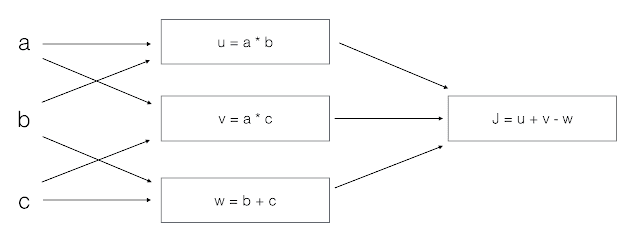Coursera: Neural Networks and Deep Learning (Week 2) Quiz [MCQ Answers] - deeplearning.ai
These solutions are for reference only.
It is recommended that you should solve the assignment and quiz by yourself honestly then only it makes sense to complete the course.
but if you cant figure out some part of it than you can refer these solutions
make sure you understand the solution
dont just copy paste it
answers in green colour
----------------------------------------------------------------------------------------------
- What does a neuron compute?
- A neuron computes an activation function followed by a linear function (z = Wx + b)
- A neuron computes the mean of all features before applying the output to an activation function
- A neuron computes a function g that scales the input x linearly (Wx + b)
- A neuron computes a linear function (z = Wx + b) followed by an activation function
(Correct, we generally say that the output of a neuron is a = g(Wx + b) where g is the activation function (sigmoid, tanh, ReLU, ...).) - Which of these is the "Logistic Loss"?
(this is the logistic loss you've seen in lecture!)- Suppose img is a (32,32,3) array, representing a 32x32 image with 3 color channels red, green and blue. How do you reshape this into a column vector?
- x = img.reshape((1,32*32,*3))
- x = img.reshape((32*32*3,1))
- x = img.reshape((3,32*32))
- x = img.reshape((32*32,3))
- Consider the two following random arrays "a" and "b":
What will be the shape of "c"? - The computation cannot happen because the sizes don't match. It's going to be "Error"!
- c.shape = (2, 1)
- c.shape = (3, 2)
- c.shape = (2, 3)
(Yes! This is broadcasting. b (column vector) is copied 3 times so that it can be summed to each column of a.) - Consider the two following random arrays "a" and "b":
What will be the shape of "c"? - c.shape = (4, 3)
- c.shape = (4,2)
- c.shape = (3, 3)
- The computation cannot happen because the sizes don't match. It's going to be "Error"!
(Indeed! In numpy the "*" operator indicates element-wise multiplication. It is different from "np.dot()". If you would try "c = np.dot(a,b)" you would get c.shape = (4, 2).) - Suppose you have
input features per example. Recall that
. What is the dimension of X?
- Recall that "np.dot(a,b)" performs a matrix multiplication on a and b, whereas "a*b" performs an element-wise multiplication.
Consider the two following random arrays "a" and "b":
What is the shape of c? - c.shape = (12288, 150)
- c.shape = (12288, 45)
(Correct, remember that a np.dot(a, b) has shape (number of rows of a, number of columns of b). The sizes match because :
"number of columns of a = 150 = number of rows of b") - The computation cannot happen because the sizes don't match. It's going to be "Error"!
- c.shape = (150,150)
- Consider the following code snippet:
How do you vectorize this? - c = a.T + b
- c = a.T + b.T
- c = a + b
- c = a + b.T
- Consider the following code:
What will be c? (If you’re not sure, feel free to run this in python to find out). - This will invoke broadcasting, so b is copied three times to become (3,3), and ∗ is an element-wise product so c.shape will be (3, 3)
- This will invoke broadcasting, so b is copied three times to become (3, 3), and ∗ invokes a matrix multiplication operation of two 3x3 matrices so c.shape will be (3, 3)
- This will multiply a 3x3 matrix a with a 3x1 vector, thus resulting in a 3x1 vector. That is, c.shape = (3,1).
- It will lead to an error since you cannot use “*” to operate on these two matrices. You need to instead use np.dot(a,b)
- Consider the following computation graph.What is the output J?
- J = (c - 1)*(b + a)
- J = (a - 1) * (b + c)
(Yes. J = u + v - w = a*b + a*c - (b + c) = a * (b + c) - (b + c) = (a - 1) * (b + c).) - J = a*b + b*c + a*c
- J = (b - 1) * (c + a)
main course coursera.org

![Coursera: Neural Networks and Deep Learning - deeplearning.ai Coursera: Neural Networks and Deep Learning (Week 2) Quiz [MCQ Answers] - deeplearning.ai](https://blogger.googleusercontent.com/img/b/R29vZ2xl/AVvXsEh9Giteccs7t6VUi_EAIsRn3QqYeqxRBWW0OmF3lW7jWR7OODsZYP86xns5E7K5ySVV0Hhd2WJ9GGd7uBeipr4PlDLpwy0DlQXXzTXou8JUapzJqwiOspa_HOy4vcY9O8J_BMRWwTvOar_z/w625-h391/neural+networks+and+deep+learning.webp)



No comments